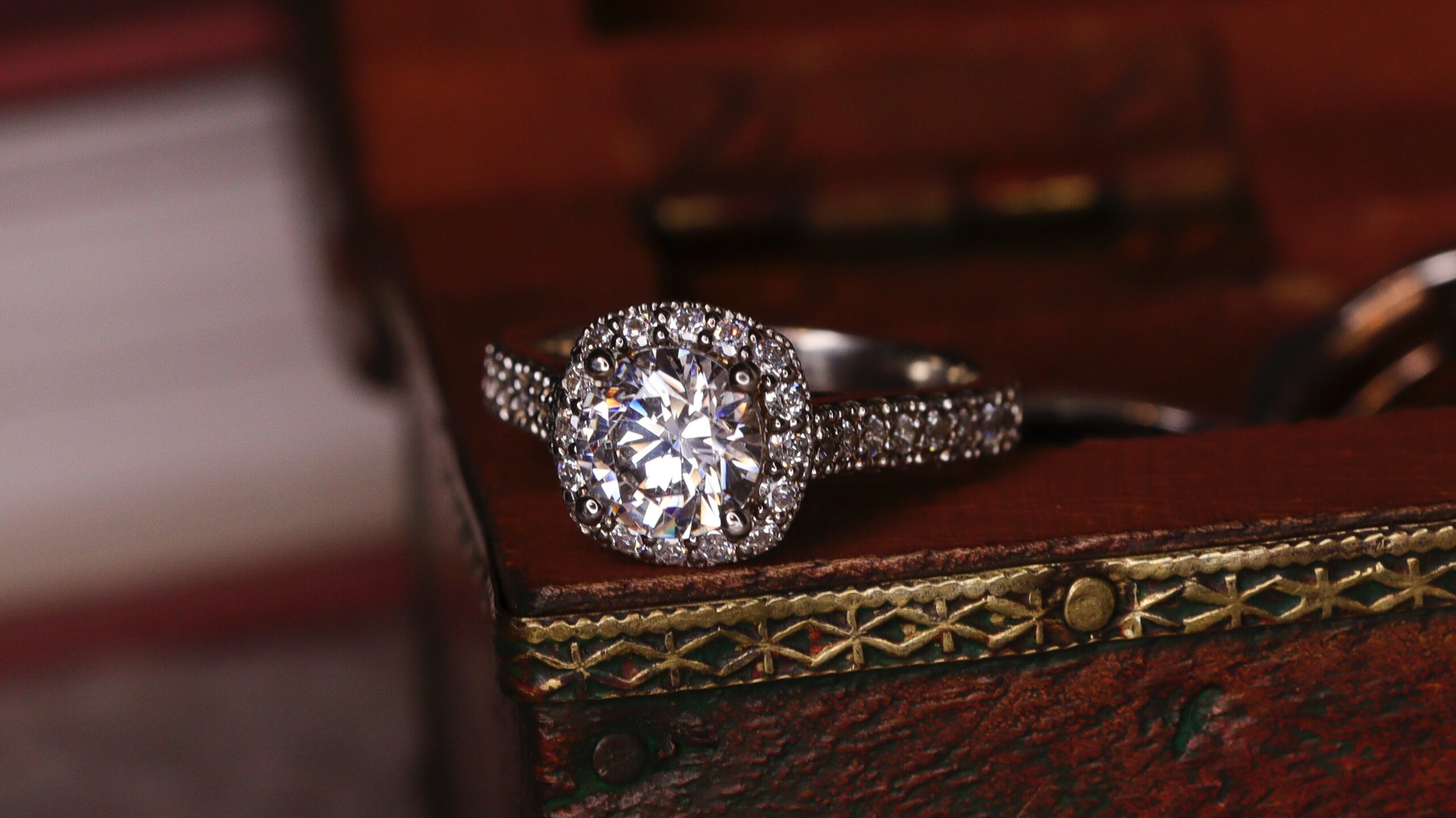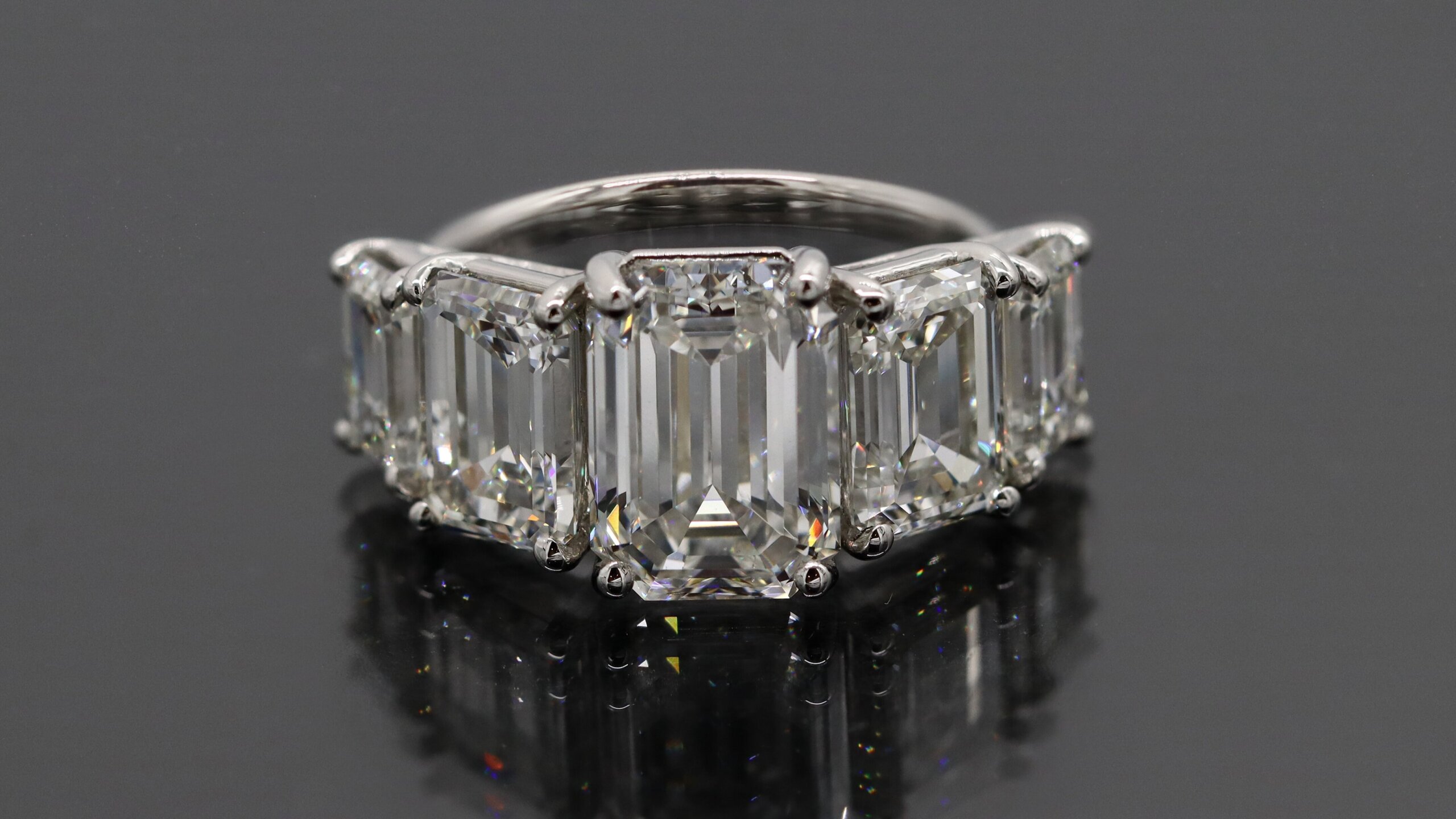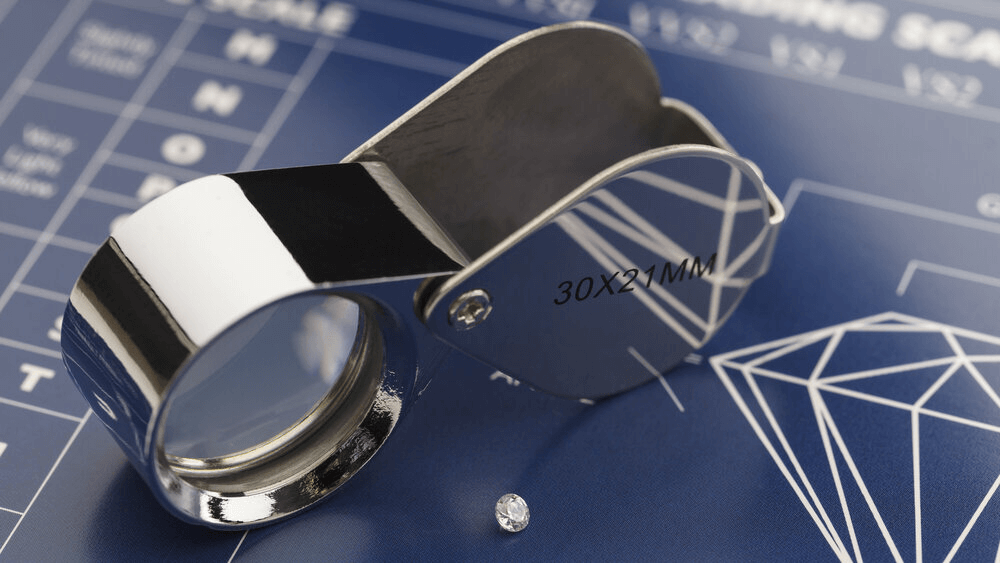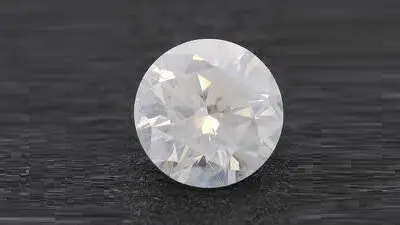The Unexpected Side Of VVS Diamond Clarity Grade

By Gary A.

Edited by Olivia H.
Published Jul 18, 2022
Edited on Dec 17, 2024
With their near-flawless clarity, VVS diamonds offer an exceptional balance of beauty and rarity, making them a top choice for those seeking brilliance without compromise.

- 7 Quick Tips for Evaluating VVS Diamond Clarity in Engagement Rings
- Introduction
- The Basics of VVS Clarity
- VVS Clarity on the Grading Scale
- The Importance of Cut in VVS Diamonds
- VVS Diamonds: Balancing Cost and Quality
- Our Expert Take
- 10 FAQs
Before we dive deeper into the specifics, here are some practical tips to help guide your decision-making process:
7 Quick Tips for Evaluating VVS Diamond Clarity in Engagement Rings
- Tip 1: Understanding the VVS Clarity Grade Know the Details: VVS stands for “Very, Very Slightly Included.” Familiarize yourself with the difference between VVS1 and VVS2, as these subtleties can affect both the appearance and value of the diamond.
- Tip 2: Prioritize Cut and Symmetry Cut Quality Matters: Even with high clarity, the cut is crucial. A well-cut VVS diamond will exhibit superior sparkle and brilliance. Look for diamonds with excellent or ideal cut grades to ensure maximum light performance.
- Tip 3: Examine Under Magnification Use Magnification Tools: While VVS inclusions are minor, use a jeweler’s loupe or microscope to examine the stone. This can help you identify any inclusions and understand their placement, which can affect the diamond’s overall appearance.
- Tip 4: Compare with Lower Clarity Grades Visual Comparison: Before finalizing, compare a VVS diamond with lower clarity grades like VS or SI. This can help you determine if the higher cost of VVS is justified for the visible difference (or lack thereof) in clarity.
- Tip 5: Consider the Diamond’s Size Size Impact on Clarity: The size of the diamond can influence how inclusions appear. In larger diamonds, VVS inclusions might be more noticeable, making thorough examination crucial.
- Tip 6: Assessing the Color Impact Color and Clarity Interplay: Examine how the diamond’s color interacts with its clarity. Sometimes, a slight tint in the diamond can make inclusions less noticeable, or vice versa. For VVS diamonds, a high color grade usually complements the clarity.
- Tip 7: Understanding the Price Value Evaluate Price vs. Appearance: VVS diamonds command a premium price. Consider whether the minimal difference in appearance compared to lower clarity grades aligns with your budget and the perceived value.
Now that you’ve got these practical tips, use Jeweler AI below to find the perfect engagement ring that suits your style and budget:
Introduction
By now, it’s pretty likely that you’ve gotten used to the idea that you won’t be investing in a flawless diamond – but, thankfully, you’re also aware of the fact that you don’t have to invest in a flawless diamond in order for it to look flawless.
This can feel like a big step for any diamond shopper. You know that it’s easy enough to save yourself thousands of dollars without it actually looking like you’ve saved money on the diamond.
The next big hurdle, however, is figuring out how far down the clarity scale you really can go before the diamonds you’re looking at actually start to look included, blemished, or, worse still, lacking in sparkle. VVS? VS? SI?
The answer lies in getting to know each of these unique clarity grades – and what they mean for the diamonds that feature them in their GIA Reports. Here’s everything you need to know about
The Basics of VVS Clarity
From what the expert diamond grader sees to what you, your bride-to-be and her eagled-eyed friends and family are going to see, here’s the lowdown on what VVS represents in your report.
What Does VVS Mean in Diamonds?
VVS is an abbreviation that means ‘Very Very Slight Inclusions’, and it will either be presented as VVS1 or VVS2 in a GIA report.
Rarity in the Diamond World
One of the most important things to understand about VVS diamonds is that they are very rare, but they’re also nowhere near as rare as FL and IF diamonds. This makes them highly popular among collectors since the odds of being able to find a genuinely flawless diamond are very, very low.
As a casual shopper, rather than a collector or jeweler, you won’t run into any FL or IF diamonds on the market. It is possible to find VVS1 and VVS2 diamonds for sale, despite the fact that they’re far less commonly found in nature than more heavily included (though, potentially, still eye clean) diamonds.
VVS Clarity on the Grading Scale
The VVS grade enjoys a high position on the clarity scale – and, as a result, attracts plenty of interest from collectors and first-time shoppers alike. It represents the first grade that can be used to identify diamonds with internal flaws since IF diamonds (the second grade on the scale) are those that have blemishes (external), but no inclusions (internal).
The GIA’s own definition for VVS diamonds is as follows:
- “Inclusions are difficult for a skilled grader to see under 10× magnification”
The VVS Advantage: Clarity and Aesthetics
VVS diamonds will be eye clean, even in diamonds with a larger carat weight. Without a microscope, you will not be able to spot the difference between a VVS and an IF diamond.
If you’ve spent any amount of time researching diamonds, you will probably already realise that eye clean diamonds are given a lot of attention among jewelers and shoppers, regardless of clarity grade.
Of course, some clarity grades are a little more giving than others when it comes to eye cleanliness. It is possible, after all, to find eye clean diamonds as far down the scale as SI2, but actually tracking them down won’t be anywhere near as easy as it is for VVS1 and VVS2 diamonds.
We’ll go into why this matters so much for you during your search for the perfect diamond below but, for now, it’s enough to say that VVS diamonds will look perfect (provided, of course, that they’re given high grades for cut and color, too).

What is the Difference Between VVS1 and VVS2?
While both diamonds appear eye clean, inclusions that warrant a VVS2 grade will be visible through the crown of the diamond (under magnification).
Other factors, such as the color of the inclusions (light or dark) and the number present within the diamond are considered, too.
Obviously, the size, placement and number of inclusions within any VVS diamond are pretty irrelevant to you since, if the diamond is eye clean, they’ll never impact the visual beauty of the stone. As a result, the price difference between a VVS1 and a VVS2 diamond won’t be as large as the price difference between, say, a VVS2 diamond and a VS1 diamond, although you will still notice some difference.
The Importance of Cut in VVS Diamonds
A VVS grade is more than enough to ensure a sparkly diamond, so long as it’s been cut to ideal proportions.
Some major inclusions can interfere with a diamond’s brilliance. For instance, cloudy diamonds, while pretty fascinating to look at, will look very dull and lifeless beside an eye clean diamond. The same goes for significant feather inclusions, which can totally derail sparkle (although most feather inclusions are unobtrusive, and won’t show without magnification).
However, inclusions anywhere near as bad as these two examples would warrant a much lower clarity grade – nowhere near the high standard required for a VVS grade.
This means that you’ll never need to worry about the inclusions within a VVS diamond impeding sparkle.
Instead, you’ll need to focus on ensuring ideal diamond cut proportions – something far more important to sparkle than clarity.
In fact, you’ll get the same excellent light performance in diamonds much lower than VVS…

VVS Diamonds: Balancing Cost and Quality
VVS sounds like a good idea in theory. It’s a high enough grade that you won’t need to worry at all about possibly investing in a diamond with noticeable inclusions, but it’s not as rare or expensive as a diamond that is microscopically flawless. But, while it may seem like that ‘sweet spot’ on the clarity scale, the cost is still not worthwhile for shoppers.
How Much is a VVS Diamond?
A 1 carat VVS diamond price will likely fall around $5,000+, with the cost increasing significantly in larger diamonds.
If the diamond falls short in another area, such as Cut, it will likely cost less – but this does not represent an opportunity to snag a good deal on a VVS diamond, since the best investments are those that strike a good balance between each of the Four Cs.
The price difference between a VVS1 and VVS2 diamond will likely be between $200 and $500 unless they differ in carat weight, color or cut quality. The difference between a VVS2 and a similar VS1 diamond, however, will be much more noticeable – in some cases, around $1,000.
Is VVS Better than VS?
On paper, yes. The VVS grades sit higher than Vs1 and VS2, which are abbreviations for ‘Very Slight’ inclusions, meaning that these diamonds have a lower clarity than VVS diamonds.
In order for a diamond to be considered VVS, the inclusions within it have to be difficult even for a skilled grader to spot. For VS diamonds, the inclusions will “range from difficult to somewhat easy for a skilled grader to see under 10x magnification”, according to the GIA’s clarity definitions.
So, while the VS diamonds inclusions are more significant than the VVS diamonds’ inclusions, are they significant enough to push you toward the higher clarity grade? No – not at all.
Without a microscope, the VS clarity grade bears a strong enough resemblance to VVS graded diamonds that it’s unlikely even a skilled grader could tell them apart. This is why we talk at length about eye cleanliness: it is much more important than what’s printed in the report.
So, is a VS diamond a better investment for you? Yes – we’re willing to bet that it is a much better choice.
Are VVS Diamonds Worth it?
In most cases, no. VVS diamond price tends to be over and above what you need to pay in order to get the same level of visual quality. In other words, VVS clarity costs a lot, but doesn’t look any different from an eye clean diamond of SI1 clarity, for instance – and the SI1 diamond will be thousands of dollars cheaper.
For shoppers looking to create a beautiful engagement ring that lives up to their future bride’s dizziest daydreams? Definitely not. Lower clarity grades offer many, many more choices at far more reasonable price points, meaning that, with the same budget, you could afford to invest in a bigger diamond that looks no less flawless than the VVS options out there. VVS diamond jewelry may sound impressive, but it’s not worth the bragging rights.
If you’re lucky enough to have no budget at all, then there’s nothing wrong with opting for a VVS diamond. But, if you’re under the impression that doing so will create a more impressive engagement ring, you’ll need to invest into a magnifying glass too, since that’s the only way you’ll be able to appreciate its superiority.
Either way, diamonds with excellent proportions, great symmetry, bright sparkle, great color and eye clean appearance should be the priority.
Our Expert Take
In brief, there are so many VVS diamonds for sale right now that would be wasted in an engagement ring. They’re not capable of rivalling FL and IF diamonds in terms of rarity or flawlessness under the microscope, but neither are they capable of rivalling the prices of lower clarity diamonds, despite the fact that you would be incapable of distinguishing between them.
Save yourself the trouble of budgeting another year’s worth of savings towards your diamond engagement ring, and forget about the VVS grades in favour of VS and, potentially, SI too.
It can be daunting to intentionally turn away from the top grades, and to feel as though you’re lowering your sights on diamonds that are inferior in quality and value. But we would ask you to trust our advice. If you’re shopping in our online store, you know that you’re getting the highest quality, so don’t be afraid to make the call. Take a look through our options and you’ll find that you feel more confident saying no to VVS1 and VVS2, as there are a number of incredible choices available at the lower clarity grades.
10 FAQs
- Q: What Does VVS Mean in Diamond Clarity?
A: VVS stands for “Very, Very Slightly Included.” It refers to diamonds with minute inclusions that are difficult to see under 10x magnification. - Q: Are VVS Diamonds Eye-Clean?
A: Yes, VVS diamonds are typically eye-clean, meaning their inclusions are not visible to the naked eye. - Q: How Does VVS Compare to Other Clarity Grades?
A: VVS diamonds are higher in clarity than VS (Very Slightly Included) and SI (Slightly Included) diamonds, but just below Internally Flawless (IF) diamonds. - Q: Is a VVS Diamond Worth the Extra Cost?
A: While VVS diamonds have superior clarity, the decision depends on individual budgets and preferences. They are often chosen for their near-perfect appearance but come at a higher cost. - Q: Can You Tell the Difference Between VVS1 and VVS2 Diamonds?
A: The difference between VVS1 and VVS2 is subtle and usually indistinguishable without magnification. VVS1 inclusions are typically near the edge and VVS2 inclusions are closer to the center. - Q: Do VVS Diamonds Have Good Resale Value?
A: VVS diamonds generally maintain good resale value due to their high clarity, but like all diamonds, they are subject to market demand and other factors. - Q: Are VVS Diamonds Good for Engagement Rings?
A: VVS diamonds are an excellent choice for engagement rings due to their high clarity and brilliant sparkle, making them a symbol of luxury and commitment. - Q: Does the Cut of a VVS Diamond Affect Its Appearance?
A: Yes, the cut greatly affects a VVS diamond’s appearance. A well-cut VVS diamond will have superior brilliance and fire compared to a poorly cut one. - Q: Can I Buy VVS Diamonds Online Safely?
A: Yes, you can safely buy VVS diamonds online from reputable retailers. Ensure they provide certification and have a clear return policy. - Q: How Important is Certification for VVS Diamonds?
A: Certification is crucial for VVS diamonds to verify their quality and authenticity. Always opt for diamonds certified by respected grading labs like the GIA.
Sort out the best VVS diamonds effortlessly with Jeweler AI – your gateway to unparalleled elegance and precision in jewelry selection.
FOLLOW-UP GUIDE SERIES





















